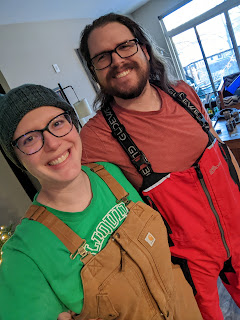Ottobeuren, Day 2
After a refreshing breakfast on the pastoral hotel patio, we visited the landmark of Ottobeuren: its Abbey. Built in 764, it has been continuously present and operated by Benedictine monks for more than 1250 years. It was burned down and rebuilt twice, but suffered no damage during WW2. Abbot John described the paintings on the walls and ceiling depicting the Creed, and the three organs within the Abbey that together comprise 10,000+ pipes! They also have relics of saints and popes from Cologne and Rome enshrined near the altars. Abbot John actually asked us to sing a little bit to honor our visit :)
Then we went for a traditional tourist attraction: Neuschwanstein. The name translates to New Swan Stone castle, referencing the swans present in the nearby town and on the local coat of arms. King Ludwig II designed it in the medieval style, and the theme of the decorations was opera; Ludwig loved opera and especially Wagner. He borrowed heavily to build his castles and never meant to open them to the public. Luckily, upon Ludwig's mysterious and untimely death, the Regent decided to open it to the public and used the proceeds to pay off the debts. The 1886 castle actually has one electric light and a battery-powered servant summoning system! We couldn't take pictures for most of the interior, but the most exciting part was when our guide found out we were a choir and asked us to sing in the Singers Hall!
For an extra hour of hiking, we got to walk on a rickety bridge over a ravine with 200 other people...all for a spectacular picture.
Ludwig had many castles, and the one he lived in most was nearby Hohenschwangau Castle. His father had it built, and Ludwig grew up there. We didn't have time to visit. Maybe next time!
Then we went for a traditional tourist attraction: Neuschwanstein. The name translates to New Swan Stone castle, referencing the swans present in the nearby town and on the local coat of arms. King Ludwig II designed it in the medieval style, and the theme of the decorations was opera; Ludwig loved opera and especially Wagner. He borrowed heavily to build his castles and never meant to open them to the public. Luckily, upon Ludwig's mysterious and untimely death, the Regent decided to open it to the public and used the proceeds to pay off the debts. The 1886 castle actually has one electric light and a battery-powered servant summoning system! We couldn't take pictures for most of the interior, but the most exciting part was when our guide found out we were a choir and asked us to sing in the Singers Hall!
For an extra hour of hiking, we got to walk on a rickety bridge over a ravine with 200 other people...all for a spectacular picture.
Ludwig had many castles, and the one he lived in most was nearby Hohenschwangau Castle. His father had it built, and Ludwig grew up there. We didn't have time to visit. Maybe next time!

















It all looks so wonderful, and your descriptions take us all right there!! ♡
ReplyDelete